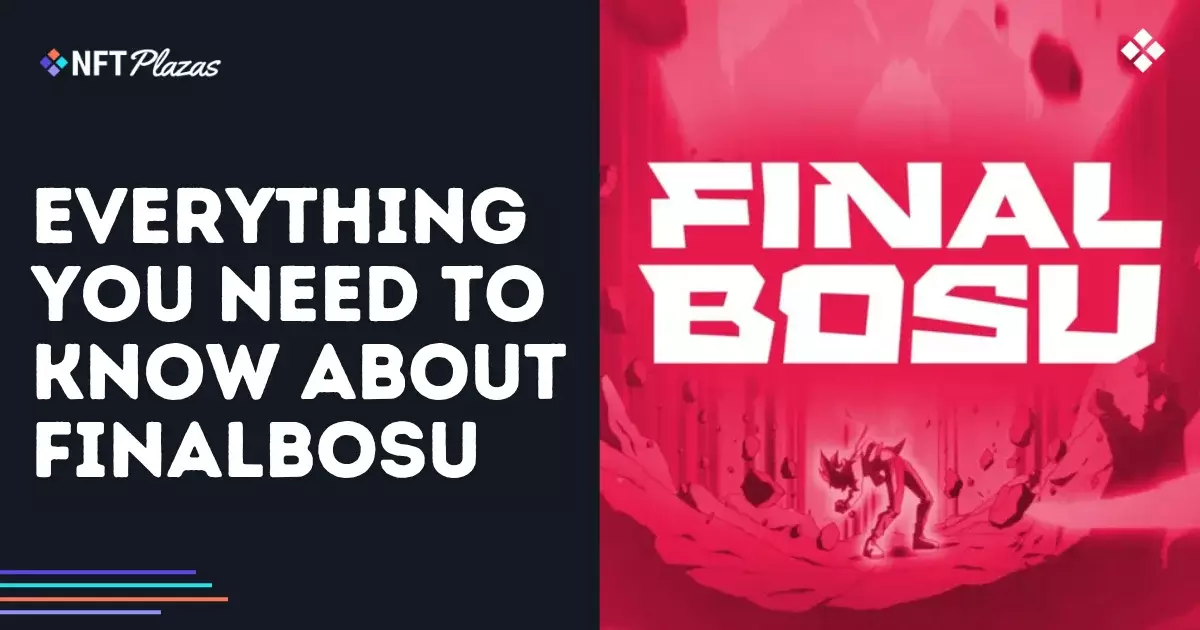In an era where digital ownership is increasingly prized, web3 anime initiatives like Finalbosu have positioned themselves as revolutionary. They promise fans more than mere entertainment—they offer community-driven narratives, exclusive collectibles, and participation in a living universe. This alluring proposition appeals to those craving a deeper connection with the stories they love, bolstered by technology’s promise of permanence and ownership. However, beneath this shiny veneer lies a complex web of assumptions—many of which can be optimistic or overly ambitious.
The underlying premise is that NFTs can transform passive fandom into active co-creators. Finalbosu’s narrative isn’t just a story; it’s a mechanism to build loyalty by giving owners stakes that transcend traditional collectibles. It hints at a future where fans influence the lore, dictate character development, and even shape the universe’s evolution. Such an approach seems revolutionary, yet it overlooks the stark reality of the NFT ecosystem: high volatility, speculative tendencies, and an often fragile market ecosystem. While the idea of a community-driven anime universe is appealing, it risks becoming a house of cards built on hype rather than sustainable engagement.
The Illusion of Community and Ownership in a Bubble
While Finalbosu’s strategic rollout demonstrates surging momentum—immediate sales, rapid secondary trading, and early community engagement—it conceals a broader concern: How sustainable is this excitement? Many NFT projects are notorious for short-term hype cycles, driven by early adopters and speculative investors rather than genuine fan loyalty or creative content. The rapid sellout of the Main Collection’s 3,445 NFTs on Abstract Chain, while impressive, prompts skepticism. Is this a sign of genuine community interest, or merely a reflection of speculative FOMO?
Moreover, the promised benefits—access to future projects, exclusive merchandise, the chance to shape the lore—are contingent on continued development, promises that are often unfulfilled or delayed. For example, the yet-to-be-developed metaverse “Dojo” and upcoming gaming initiatives are still on the horizon. This leaves community members investing based on future potential, which is inherently uncertain. The NFT market, especially in niche areas like anime, remains vulnerable to market crashes, regulatory crackdowns, and shifting consumer tastes. Relying on speculation can be perilous, and the assumption that a strong narrative and aesthetic alone will sustain long-term value is overly optimistic.
The Overlooked Cost of Digital Dreams
Building a multimedia universe—spanning games, animation, merchandise, and metaverse spaces—is no small feat. For Finalbosu’s creators, the journey from concept to reality involves immense resource allocation, meticulous planning, and risk management. While the project’s founders seem committed, history offers cautionary tales of projects that over-promised and under-delivered. The web3 space’s lack of standardized development processes means even the most promising initiatives can run into delays, funding shortages, or technical hurdles that threaten their viability.
Furthermore, the hype around such projects often disguises their underlying fragility. Creators often elevate their vision spectacularly, only to face the brutal reality of technical constraints, user engagement fatigue, or market downturns. The optimistic forecasts of eventual dominance in gaming or animation must confront the resources required to realize such ambitions. Without solid, transparent roadmaps and consistent delivery, these projects risk alienating their core supporters, who may grow impatient or disillusioned.
Reevaluating the Power Dynamics of Web3 Anime
A more critical perspective reveals that projects like Finalbosu, despite their community-oriented ideals, still operate within a hierarchical structure—where developers and project founders hold most decision-making power. The narrative of fans helping to build the universe can sometimes mask a top-down approach, where the creators’ vision remains the ultimate authority. This dynamic raises questions about the authenticity of “community-driven” initiatives and whether true co-creation is feasible or merely a marketing slogan.
While the NFT framework offers innovative ways to incentivize participation—through badges, lore unlocking, and character contributions—it’s essential to recognize that ownership of a digital asset doesn’t necessarily translate to influence over the creative process. Power and control remain concentrated among the founding team, and the community’s role often simplifies to feedback and superficial contributions rather than decision-making authority.
Moreover, the financialization of fan engagement risks commodifying art and storytelling, turning cultural expression into investment assets. That shift can dilute the emotional depth of the narratives, reducing them to speculative vehicles rather than meaningful cultural phenomena. For a project claiming to promote personal growth and resilience, this paradox is difficult to ignore; genuine development requires more than tokens and hype—it demands transparency, integrity, and a unwavering commitment to authentic storytelling.
The Path Forward: Caution Amidst Excitement
While the enthusiasm surrounding Finalbosu and similar projects is undeniable, it deserves a cautious yet pragmatic lens. The initial successes may be fleeting, and the lofty ambitions—gaming, animation, metaverse—hinge on factors beyond the creators’ immediate control. The challenge lies not just in building a captivating universe but in maintaining community trust, managing expectations, and navigating a volatile digital economy.
The danger of uncritically celebrating NFTs’ potential in anime and entertainment lies in overlooking their inherent contradictions: a force for empowerment on paper, but often a catalyst for speculation and short-term gains in practice. If the industry is to move toward genuine innovation, creators must prioritize transparency and realistic planning, resisting the hype-driven mindset that promises overnight riches.
Ultimately, projects like Finalbosu serve as a mirror—highlighting both the incredible possibilities and the perilous illusions of web3-based fandom. The real test will be whether the community and the founders can sustain a delicate balance: nurturing authentic cultural expression while resisting the seductions of hype, speculation, and overreach. Only through this honesty can the dream of a truly meaningful, community-driven anime universe become a resilient reality.

